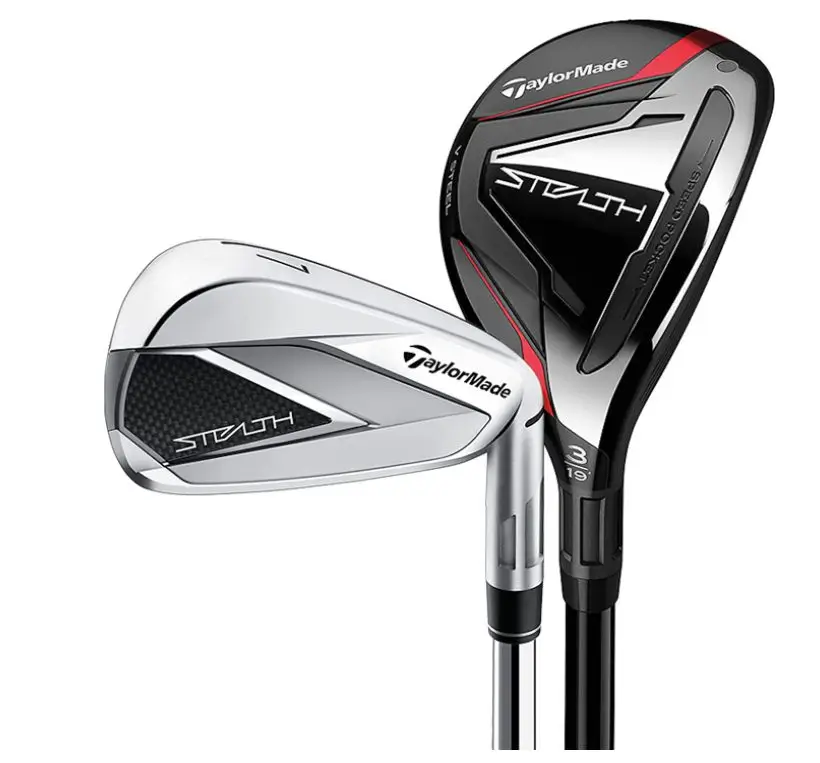What are golf clubs made of? Usually, many new and pro players want to know. Golf clubs are made of various materials, including metal, plastic, and wood. Each material has unique properties that make a club better or worse for hitting the ball.
Metal
These golf clubs are typically the best choice for people who want to hit the ball as far as possible. They’re strong and durable, which means they’ll last longer than clubs made of other materials. However, metal golf clubs are also heavier than different clubs, making them difficult to swing.
Plastic
These clubs are usually the second-best option for people who want to hit the ball far. They’re lightweight and flexible, which makes them easy to swing. However, plastic golf clubs will only last as short as metal clubs and don’t handle impact very well.
Wood
Wood is the most popular material for golf clubs. It’s strong and durable, making it a good choice for clubs you might use for a long time. Plus, wood has a natural sound that some people find appealing.
Golf clubs are arguably one of the essential pieces of equipment in a golfer’s arsenal. They allow you to hit the ball into the air and then hit it back down onto the ground, which is why they’re so important! But what are golf clubs made of, and why do they matter?
In this, we’ll look at what golf clubs are made of, why they matter, and some of the different types of golf clubs available on the market. We’ll also discuss the benefits of club material, things to consider while choosing the golf material so that you play like a pro.
So whether you’re a beginner looking to buy your first set of golf clubs or an experienced player looking for something new to try out, this guide is for you.
Types of Golf Clubs
There are a few different golf clubs Material made of other materials; woods and iron use metal frames, while drivers, fairway woods, and hybrids use plastic or composite materials. Clubs can also be wood-like with a plastic face or metal heads with a plastic body.
Woods
Woods is the most popular type of golf club because they’re easy to hit, forgiving, and reliable. They typically use a wooden frame with a metal head. They’re usually the heaviest clubs in your bag and are best for longer shots.
Irons
Irons are design for players who want to hit the ball further than woods allow. They use a metal frame with a steelhead. They’re generally lighter than woods and are better for short shots and aggressive play.
Drivers
Drivers are the biggest and most influential clubs in your bag. They use a heavier metal frame with an aluminum head.They are used for extended and brute-force shots close to the green.
Fairway woods
Fairway woods are designed to be played off the tee box on medium-length holes. They have a similar shape to drivers but weigh less, so they don’t add too much backspin on off-center hits.
Hybrids
Hybrids combine features from both drivers and fairway wood into one club that’s perfect for all sorts of shot-making needs. They typically have a lightweight composite body.
Why are these materials the best for Golf Clubs?
These materials are the best for golf clubs because they offer the most balanced combination of weight, durability, performance, and cost. Stainless steel offers good performance at an affordable price. Graphite and titanium shafts provide greater distance but require more skill to control.
Meanwhile, composite materials like carbon fiber composites and titanium matrix composites are lightweight and offer excellent performance. Finally, different grips, such as rubber and synthetic leather, offer different traction levels, while cords provide more comfort and reduce vibration. All these materials can help improve a golfer’s performance on the course.
Benefits of Using Good Golf Materials
- Using suitable materials can help a golfer save money in the long run by not needing to replace clubs as often.
- The right combination of materials ensures that golfers have the most comfortable experience while playing and provides them with improved performance on the course.
How Does a Golf Ball Hit the Golf Club?
A golf ball is round and made of a particular type of material. It is covered with a thin layer of rubber, allowing it to travel through the air. The golf ball is then inflated with air. This makes it more enormous and round, which is why professional golfers hit balls much more significantly than those used by amateurs.
The head is shaped like a wedge with two sharp edges on either side. These edges help to slice the air and cause the ball to spin as it travels toward the hole.
Precautionary Measure While Choosing Materials For Golf Clubs
When choosing material for golf clubs, it is vital to consider some key factors.
- The golfer should consider their skill level, playing style, and budget when selecting the material that best suits their preference.
- They should assess how often they will be using their clubs to ensure they choose materials that will last.
- The golfer should consider the weather conditions they will be playing in, as some materials are better suited for certain climates.
- Finally, it is advisable to consult with a golf professional before deciding which materials to use to ensure that they choose the right one for their game.
By considering all of these factors and consulting with a professional, golfers can ensure that they select the best material for their needs. With suitable materials, golfers will have the tools to improve their game and take it to the next level.
The Technology Behind Modern Golf Clubs
Golf clubs are traditionally created of metal, but increasingly clubs are made of composite materials that are lighter and more durable. The technology behind modern golf clubs is fascinating, and the different materials used in golf clubs have a lot to do with how well they perform.
Golf Clubs are typically made from metals, composites, and plastics. Metals make the strongest g clubs, but they can be heavy and difficult to handle. Composite material golf clubs are generally lighter than metal g clubs and offer more flexibility than metal golf clubs.
They are less durable than metal or composite golf clubs but are often cheaper to manufacture. Plastic golf club heads are becoming increasingly popular due to their lightweight properties and resilience against damage.
Why do golf club materials matter?
Golf clubs are typically composed of metal, plastic, and wood. Metal is the most common material, making up the club head, shaft, and grip. The shaft is the long, thin piece that attaches the clubhead to the handle. The grip is a pad on the handle that helps you hold onto the club.
Wood is usually used for the body of the club. It’s strong but also lightweight so that it can be swung quickly. Plastic is generally used for the clubface and grips. It’s durable but flexible, so it can fit comfortably in your hand.
FAQs
Steel shafts are often recommended for beginner golfers as they offer more forgiveness than graphite shafts. Graphite shafts provide greater distance but require a higher skill level to control them.
Irons are usually made of either steel or cast iron. Steel is a metal alloy consisting of iron and small amounts of other elements, such as carbon.
Cast iron contains even more carbon than steel but also includes other metals like nickel and chromium. Both types of iron can be used to create solid and durable irons.
Old Golf clubs were made from European hardwoods such as ash or hazel for the shafts.








